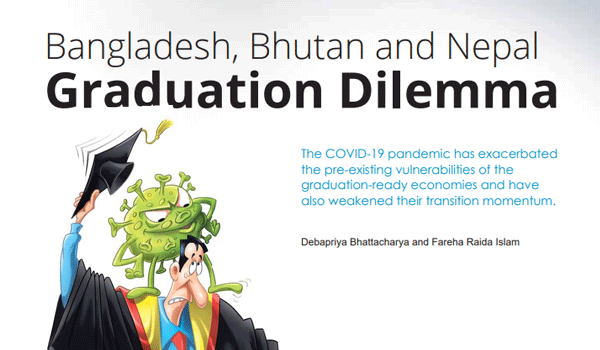
The COVID-19 pandemic has exacerbated the pre-existing vulnerabilities of the graduation-ready economies and have also weakened their transition momentum.
Low per capita income, low level of human assets, and high economic and environmental vulnerabilities are the defining features of least-developed countries (LDCs).1 A total of 12 countries (out of a total of 47) are set to graduate from the LDC group by 2024.2 Seven of these 12 ‘graduating LDCs’ are located in Asia and the Pacific, and three of them— Bangladesh, Bhutan and Nepal—are in South Asia. Limited productive capacities and depressed productivity growth have inhibited these three South Asian countries, like most of the LDCs, from pursuing rapid diversification, which is a major Bangladesh, Bhutan and Nepal Graduation Dilemma Debapriya Bhattacharya and Fareha Raida Islam The COVID-19 pandemic has exacerbated the pre-existing vulnerabilities of the graduation-ready economies and have also weakened their transition momentum. Trade Insight Vol. 16, No. 3, 2020 13 determinant of poverty reduction and an essential factor for sustainable longterm growth.3 These countries also have low domestic resource mobilization, constricted fiscal space, limited access to private credit markets, and subpar institutional capacities. Moreover, these South Asian graduating LDCs are also climate-affected nations and victims of frequent natural disasters. The Himalayan economies—Nepal and Bhutan—face an additional geographical impediment of being landlocked, which makes connectivity precarious for them.
Author: Debapriya Bhattacharya and Fareha Raida Islam
Click here to find the journal article.



